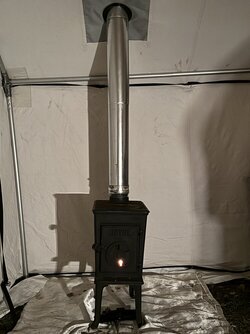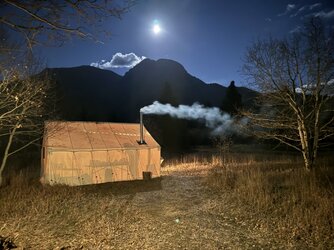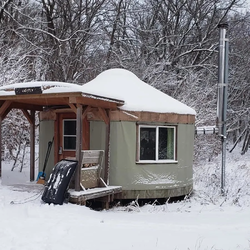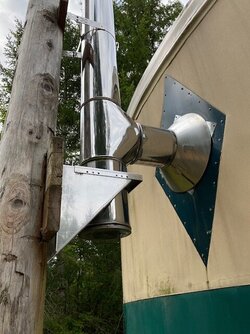I'm building a wall tent like this
https://denforourcubs.wordpress.com/2017/11/27/we-live-in-a-tent/
I have an older Woodland, I'm not sure of the model. Single door, 27inch stove. I think I found the ad on here in another thread but I can't find it right now.
It has a 6" flue. The wall tent and fly tarp both have a stove jack in them. I am somewhat considering also putting a silicone stove jack in as I will have to cut a little further into the fabric to fit the insulated pipe.
This is the stove jack in the tent https://www.walltentshop.com/products/adaptive-stove-jack-with-flap
Is this pipe ok? I need 12' total. I can't seem to find the pipe rain cover for it though
https://www.menards.com/main/heatin...nt-pipe/dsp6p36-1/p-1444453720169-c-19451.htm
This is the rain cap menards sells, but I thought it's not good to mix parts
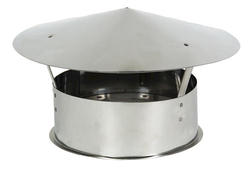
 www.menards.com
www.menards.com
https://denforourcubs.wordpress.com/2017/11/27/we-live-in-a-tent/
I have an older Woodland, I'm not sure of the model. Single door, 27inch stove. I think I found the ad on here in another thread but I can't find it right now.
It has a 6" flue. The wall tent and fly tarp both have a stove jack in them. I am somewhat considering also putting a silicone stove jack in as I will have to cut a little further into the fabric to fit the insulated pipe.
This is the stove jack in the tent https://www.walltentshop.com/products/adaptive-stove-jack-with-flap
Is this pipe ok? I need 12' total. I can't seem to find the pipe rain cover for it though
https://www.menards.com/main/heatin...nt-pipe/dsp6p36-1/p-1444453720169-c-19451.htm
This is the rain cap menards sells, but I thought it's not good to mix parts

Supervent® 6" ID Class A Double Wall Rain Cap
For over 80 years, Selkirk has been the leading manufacturer of chimney, venting and air distribution products. Time-tested commercial and industrial installations throughout North America and globally. Supervent (JSC) is designed for All-Fuel applications - with a Stainless Steel outer casing...



